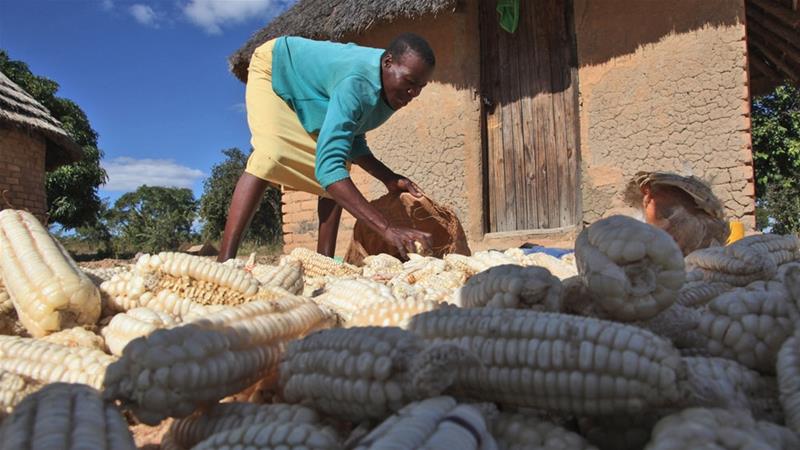
Global food prices have risen 33 percent in the last 12 months, according to the United Nations’ Food and Agriculture Organisation (FAO). Basic staples such as vegetable oil, grains and meat have shown some of the highest increases.
Coming on top of the economic catastrophe visited on billions by the pandemic, these pressures will fuel inflation making it difficult for workers to feed their families as hunger surges across the globe.
With the world’s poorest countries lacking the resources to provide food subsidies or social support; rising grain, oil and sugar prices threaten masses of people already living a hand to mouth existence with malnutrition and starvation.
Analysts are expecting prices to continue rising, as extreme weather, the surge in fertiliser and freight costs, shipping logjams, supply chain blockages, export bans on key foodstuffs by some producer countries, stockpiling by others, and labour shortages compound the problems. They also point to the growing demand for corn and vegetable oils for biodiesel as well as China’s rising demand for grain imports.
While climate change and unfavourable weather conditions have played a role in driving up food prices, this does not explain the fact that lumber prices have also reached record highs and metals, such as iron ore, tin, copper, palladium and silver, have risen along with oil.
What most analysts will not mention is the role of market manipulation, profiteering and speculation in pushing up prices. Speculation has been fuelled by the supply of ready cash provided by capitalist governments, particularly in the US and Europe in response to the financial market meltdown of March 2020 at the start of the pandemic.
The US has kept interest rates close to zero, while expanding the money supply via “quantitative easing”, currently running at $120 billion a month, and bought up corporate debt via its “asset purchasing programme.” These measures, along with Congress’s giant $2 trillion package for support to US corporations, including funds to cover the Federal Reserve’s losses and enable it to lend more than $4 trillion, flooded the market with cash and fuelled speculation in basic commodities.
When inflation is taken into account, food prices are higher than at almost any time in the last 60 years, including during the 2008 and 2011 food crises. Consumer price inflation for food rose 6.3 percent in 2020, with the most affected regions being South America facing 21 percent food price inflation, Africa and South Asia 12 percent and Oceania 8 percent.
The International Monetary Fund (IMF) said the impact would be “felt most by consumers in emerging markets and developing countries still wrestling with the effects of the pandemic.” The UN’s World Food Programme (WFP) pointed out that whereas the 2008 and 2011 food crises that triggered dozens of riots across Asia, the Middle East and Africa were caused by either price increase or falling incomes, both are a feature of the current crisis.
According to the WFP, 270 million people could face potentially life-threatening food shortages this year, up from 150 million before the pandemic. It estimates that the number of people on the brink of famine, the most acute phase of a hunger crisis, has risen to 41 million people, compared to 34 million last year.
According to a report just published by the FAO, the UN Development Programme (UNDP) and the UN Environment Programme (UNEP), more than 800 million people experienced chronic hunger in 2020, while 3 billion—more than a third of the world’s population—could not afford a healthy diet. This increase was equal to that of the previous five years combined. Almost 1 billion were food insecure, a 20 percent increase on 2019.
Last month, the WFP and FAO warned that “conflict, the economic repercussions of Covid-19 and the climate crisis are expected to drive higher levels of acute food insecurity in 23 hunger hot spots over the next four months.”
Lebanon’s food inflation soared to 400 percent last year due to its plummeting currency as the government defaulted on its debt amid continuing economic turmoil exacerbated by US sanctions on Syria—to which Lebanon’s economy is closely linked—the pandemic and the after-effects of the Beirut port explosion. Both Lebanon and Syria have seen food prices double this year, with cooking oil in Syria quadrupling in price and forcing the government to limit the import of foodstuffs to preserve its dwindling foreign currency reserves and safeguard wheat imports.
The situation is particularly bad in Africa, where many countries are engulfed in wars and conflicts and others have experienced climate-related floods, drought and locust-swarms that have exacerbated the growing food crisis. Ethiopia, where there is a civil war raging in Tigray that has spilled over into Amhara and Afar, as well as other conflicts in the south-west of the country, has more people affected by famine than anywhere in the world.
The price increases will hit hardest those countries dependent on imports for their staple foodstuffs. In West Africa, the price of staples is up 40 percent over a five-year average, with Nigeria experiencing food inflation of 23 percent, the highest level in 15 years. In Sudan, workers face food inflation of more than 200 percent.
Since the start of the year, protests have raged in Sudan, while the rising cost of food contributed to protests in Lebanon, Iraq, Tunisia, Cuba and South Africa. In this last week, Aden, Yemen’s southern port city, has been rocked by five days of mass protests. These are over the lack of basic services and the more than fourfold decline in Yemen’s currency against the US dollar since the start of the Saudi Arabia-led invasion and war that has led to soaring food prices in a country where 80 percent of the population rely depend on aid.
But it is not just poor countries that have seen the impact of rising food prices. In the US, the world’s richest country, a recent survey revealed that 8.6 percent of people said they sometimes or often didn’t have enough to eat in the previous week. According to the Food Research and Action Center, more than 38 million Americans (11.8 percent) lived in households that struggled against food insecurity, or lack of access to an affordable, nutritious diet, a 9 percent increase on 2019. One in 25 (3.9 percent) of households experienced very low food security, forcing them to regularly skip meals or reduce their food intake because they could not afford more food.
In middle income countries such as Turkey, a major food producer, President Recep Tayyip Erdogan’s popularity has slumped as food inflation increased for a fourth month in August to 29 percent. Russia, the world’s top grains exporter, introduced a wheat export tax in February to curb exports, reducing its market share and foreign currency earnings, while doing nothing to limit rising food prices at home that are now at a five-year high. Romania, despite being the EU’s top grain exporter this year, has seen prices soar at a double-digit pace, with inflation this year set to be the highest in eight years.
Arif Husain, the WFP’s chief economist, warned that rising food insecurity could fuel migration as people from poorer countries flee to richer ones in search of the means to feed their families. Joe Glauber, a senior research fellow at the International Food Policy Research Institute in Washington and a former chief economist at the US Department of Agriculture, said that food insecurity was often a trigger for unrest.
Originally published in WSWS.org













































